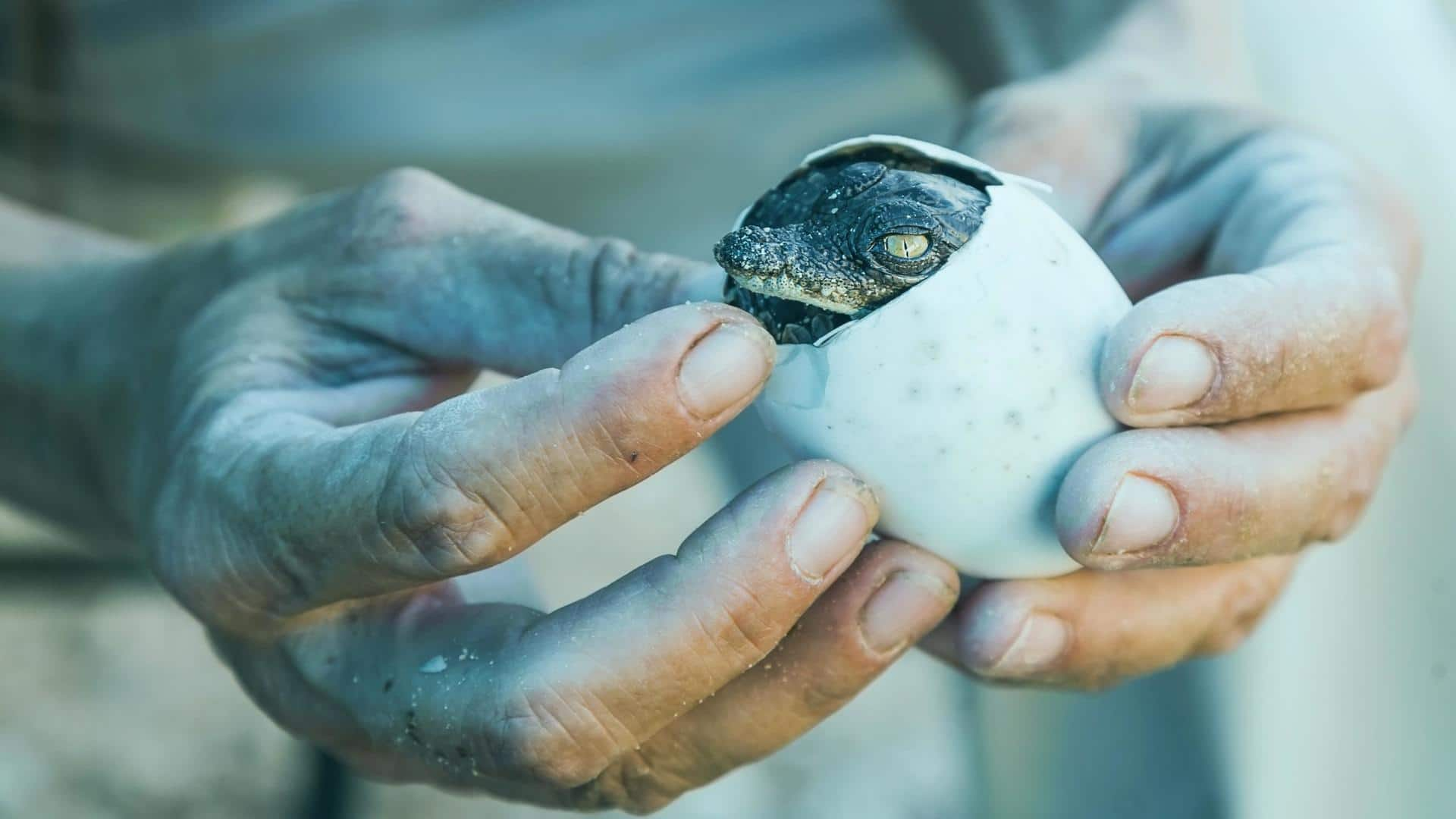
Virgin birth: These animals don't need mating partners to reproduce
What's the story
In an extraordinary occurrence, a female crocodile in a zoo in Costa Rica has astounded scientists by achieving a "virgin birth," a first for the species. Despite having no contact with a male crocodile for almost 16 years, she managed to impregnate herself. She laid an egg that contained a fetus that shared an incredible 99.9% genetic similarity with her!
Evolution
Might have inherited the ability from an evolved ancestor
In a scientific journal Biology Letters, researchers wrote that a crocodile, living in captivity at Parque Reptilania, might have inherited the extraordinary power of asexual reproduction from an ancestor. While virgin births are known in some birds, fish, and reptiles, this is the first-ever documented case involving a crocodile. This revelation opens up a new aspect of reptilian evolution and reproduction.
Process
How do virgin births occur?
Scientifically referred to as parthenogenesis, virgin births occur when a species produces offspring without mating. This process starts when the species develops special reproductive cells called gametes. These gametes are formed through a series of cell divisions known as meiosis, where a cell with two sets of chromosomes splits into two smaller cells. These smaller cells later unite and develop into a fetus.
Komodo dragon
Virgin birth is prevalent in Komodo dragons
In 2006, workers at two United Kingdom (UK) zoos made a fascinating discovery. Two female Komodo dragons laid an unusual batch of eggs, even though neither female had been in recent contact with a male of that species. To everyone's surprise, these eggs successfully hatched into healthy babies. Genetic analysis later confirmed that parthenogenesis, or virgin birth, was responsible for this extraordinary phenomenon.
Sharks
Among sea animals, sharks are well ahead in reproductive evolution
Back in 2001, a captive female bonnethead shark - a type of hammerhead shark, gave birth to a normal-appearing female offspring. But unfortunately, the baby shark didn't survive beyond a few days. Days later, upon careful investigation, researchers discovered that the baby shark's genes were an exact match to its mother's, confirming that it was a result of parthenogenesis.
Bees
Cape honey bees self-reproduce through a unique way called thelytoky
The Cape honey bee, found in South Africa, has a unique way of reproducing called thelytoky, a specific form of parthenogenesis. In this process, unfertilized eggs develop into diploid females, carrying the usual double set of chromosomes. While the worker bees produce offspring through parthenogenesis, the queen lays all the eggs in the hive via sexual reproduction.
Crayfish
Marmorkrebs too can self-reproduce
The parthenogenetic form of the North American crayfish called marmorkrebs is a popular aquarium pet. It surprised scientists in 2003 when it was observed that those kept alone were laying eggs that matured into thriving adults. This revelation, discovered in Germany, led to genetic analysis and lab investigations, which confirmed that these crayfish were capable of reproducing through parthenogenesis.
Survival strategy
Asexual reproduction as a survival strategy
The exact reasons behind the occurrence of virgin births in certain species remain uncertain to scientists. However, many propose that this ability may arise as a response to challenging environmental circumstances or the looming threat of extinction. It is believed that under such conditions, asexual reproduction could serve as a survival strategy, allowing the species to reproduce without the need for a mate.
Human Possibility
Is virgin birth possible in humans?
Among mammals, including humans, it is not possible for a female to give birth without a father. This is because the egg cell of a mammal usually needs a signal from the sperm to start dividing. Moreover, most mammalian eggs have only half of the required chromosomes for proper development. Without the involvement of sperm, the resulting embryo would have insufficient DNA to survive.